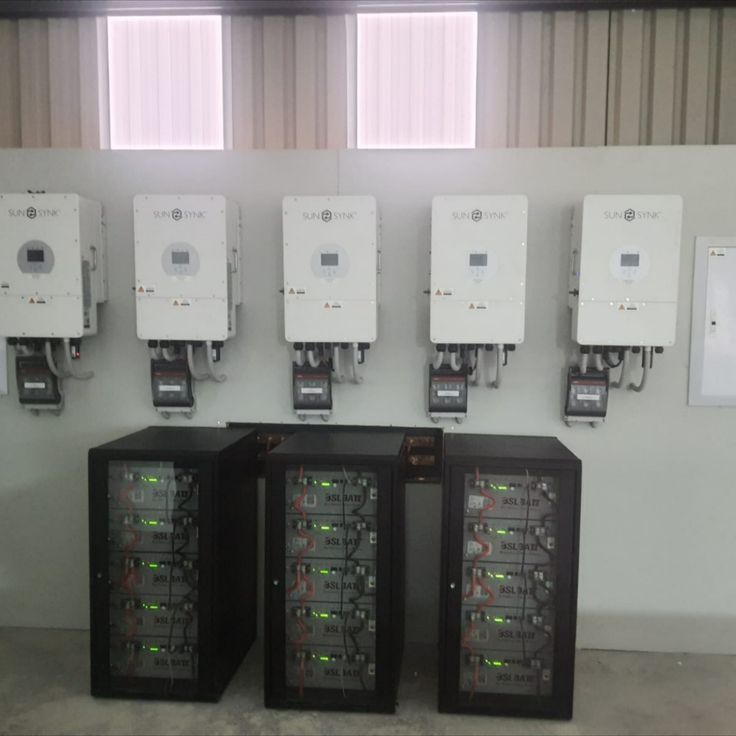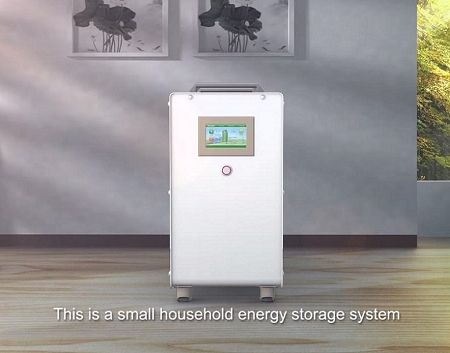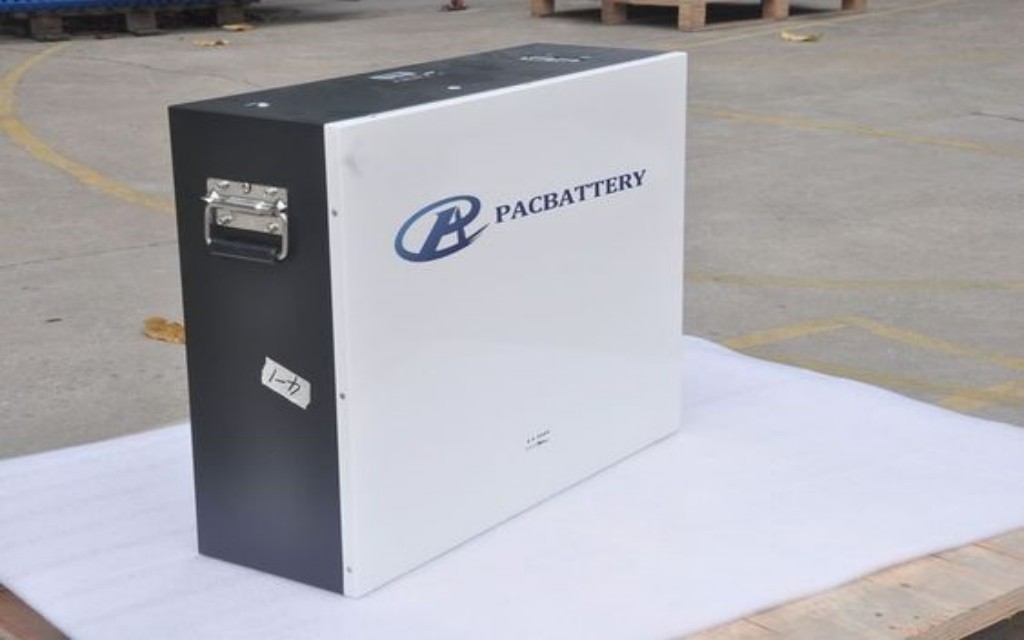Unlocking the Potential of Renewable Energy: The Role of Energy Storage Systems
In a world where the need for sustainable energy solutions has never been greater, renewable energy sources have emerged as a promising alternative to traditional fossil fuels. However, harnessing the full potential of renewable energy has its challenges. One of the key obstacles faced by renewable energy systems is their intermittent nature, as they rely on external factors such as weather conditions. By unlocking the potential of renewable energy through effective energy storage, we can revolutionize the way we power our homes, businesses, and communities. From batteries to pumped hydro storage and innovative technologies like flywheels and compressed air energy storage, the possibilities are endless. Join us as we delve into the role of energy storage systems in unlocking the true potential of renewable energy and paving the way for a greener and more sustainable future.
The Need for Energy Storage Systems
Renewable energy sources such as solar and wind power have gained significant traction in recent years. They offer clean, abundant, and virtually unlimited sources of energy. However, their intermittent nature poses a challenge when it comes to meeting the constant demand for electricity. Energy storage systems play a crucial role in addressing this issue. These systems allow excess energy generated during periods of high production to be stored and used during times of low production or high demand. By effectively storing and utilizing renewable energy, we can ensure a stable and reliable power supply, reducing our dependence on fossil fuels and minimizing the impact on the environment. Energy storage systems are the missing piece of the puzzle that can unlock the full potential of renewable energy.
Energy storage systems come in various forms, each with its own advantages and limitations. Let's explore some of the most common types of energy storage systems.
Types of Energy Storage Systems
Batteries:
Batteries are one of the most widely used energy storage systems. They store electrical energy in chemical form and can be charged and discharged as needed. Lithium-ion batteries, in particular, have gained popularity due to their high energy density, long cycle life, and fast response times. They are commonly used in electric vehicles and grid-scale applications. Other types of batteries include lead-acid batteries, sodium-ion batteries, and flow batteries.
Pumped Hydro Storage:
Pumped hydro storage is one of the oldest and most established forms of energy storage. It involves using excess energy to pump water from a lower reservoir to a higher reservoir. During periods of high demand, the water is released, passing through turbines to generate electricity. Pumped hydro storage offers high efficiency, long duration storage, and the ability to respond quickly to fluctuations in demand. However, it requires specific geographical conditions and large-scale infrastructure, limiting its widespread adoption.
Flywheels:
Flywheel energy storage systems store energy in the form of a rotating mass. Excess energy is used to accelerate the flywheel, which can then release the stored energy when needed. Flywheels offer fast response times, high power density, and a long cycle life. They are often used in applications that require short-term power backup, such as data centers and hospitals. However, flywheels have limited energy storage capacity and are more suitable for quick bursts of power rather than long-duration storage.

Compressed Air Energy Storage (CAES):
CAES systems store energy by compressing air and storing it in underground caverns or tanks. During periods of high demand, the compressed air is released and expanded through turbines to generate electricity. CAES offers large-scale energy storage capacity and can be combined with renewable energy sources to provide a stable power supply. However, it requires specific geological conditions and has lower efficiency compared to other energy storage systems.
These are just a few examples of the energy storage systems available today. Each system has its own unique characteristics and suitability for different applications. The choice of energy storage system depends on factors such as cost, efficiency, scalability, and geographical constraints. Now, let's explore the advantages of energy storage systems.
Advantages of Energy Storage Systems
- Grid Stability: Energy storage systems play a crucial role in maintaining grid stability. They can absorb excess energy during periods of high production and supply it during times of low production or high demand. This helps balance the supply and demand of electricity, reducing the risk of blackouts and ensuring a reliable power supply.
- Integration of Renewable Energy: Energy storage systems enable the effective integration of renewable energy sources into the grid. They help overcome the intermittent nature of renewable energy by storing excess energy and releasing it when needed. This allows for a more consistent and reliable power supply from renewable sources. Reducing the reliance on fossil fuels and lowering carbon emissions.
- Peak Shaving and Demand Management: Energy storage systems can help manage peak demand periods by providing additional power when needed. By reducing the strain on the grid during peak hours, energy storage systems can help lower electricity costs and improve the overall efficiency of the system. They also allow for better demand management, enabling consumers to use stored energy during times of high electricity prices.
- Emergency Backup Power: Energy storage systems provide a reliable source of backup power during emergencies or power outages. They can be used to power critical infrastructure such as hospitals, emergency services, and communication networks, ensuring the continuity of essential services.
- Ancillary Services: Energy storage systems can provide ancillary services to the grid, such as frequency regulation and voltage control. These services help maintain the stability and reliability of the grid, ensuring a smooth flow of electricity.
Energy storage systems offer numerous advantages that contribute to a more sustainable and resilient energy infrastructure. However, they also come with their own set of challenges and limitations.

Challenges and Limitations of Energy Storage Systems
- Cost: The cost of energy storage systems has been a significant barrier to their widespread adoption. While the cost of certain technologies, such as lithium-ion batteries, has been decreasing, energy storage systems still require significant upfront investment. The cost of materials, manufacturing, and installation can be prohibitive, especially for large-scale applications.
- Environmental Impact: The production and disposal of energy storage systems can have environmental implications. The extraction of raw materials, such as lithium and cobalt, for battery production can lead to environmental degradation and social issues. Additionally, the disposal of used batteries and other energy storage components requires proper recycling and disposal methods to minimize their impact on the environment.
- Efficiency and Energy Losses: Energy storage systems are not 100% efficient, and energy losses occur during the storage and conversion processes. These losses can vary depending on the type of system and technology used. Improving the efficiency of energy storage systems is crucial to maximize the benefits and minimize waste.
- Scalability: Scaling up energy storage systems to meet the growing demand for renewable energy can be challenging. Some technologies, such as pumped hydro storage, require specific geographical conditions and may not be feasible in all locations. Developing scalable and cost-effective energy storage solutions is essential for the widespread adoption of renewable energy.
Despite these challenges, energy storage systems have already found successful applications in various sectors. Let's explore some case studies that highlight the successful implementation of energy storage systems.
Case Studies: Successful Implementation of Energy Storage Systems
- Hornsdale Power Reserve, Australia: The Hornsdale Power Reserve in South Australia is one of the largest lithium-ion battery storage projects in the world. It was developed by Tesla in partnership with the South Australian government. The project consists of a 150 MW battery energy storage system that helps stabilize the grid and provides backup power during periods of high demand. The Hornsdale Power Reserve has been instrumental in reducing blackouts, improving grid stability, and integrating renewable energy into the grid.
- Gills Onions, California, USA: Gills Onions, a vegetable processing facility in California, implemented a unique energy storage system using onion waste. The facility uses excess onion juice to produce biogas, which is then used to generate electricity. The energy is stored in a battery system and used to power the facility during peak hours. This innovative solution not only provides a sustainable source of energy but also reduces waste and lowers electricity costs.
- Neoen's Tesla Battery, France: Neoen, a renewable energy company, partnered with Tesla to develop a 129 MWh battery energy storage system in France. The battery system is connected to a wind farm and provides backup power during periods of low wind generation. It helps stabilize the grid and ensures a constant supply of electricity, reducing the reliance on conventional power sources.
These case studies demonstrate the successful implementation of energy storage systems in different settings. They showcase the potential of energy storage in revolutionizing the energy landscape and driving the transition towards a greener and more sustainable future.
Government Policies and Incentives for Energy Storage Systems
Government policies and incentives play a crucial role in promoting the adoption of energy storage systems. Many countries and regions have implemented supportive policies and financial incentives to encourage the deployment of energy storage technologies. These policies aim to address the barriers to adoption, such as high upfront costs and regulatory challenges. Some common policy measures include:
- Financial Incentives: Governments provide financial incentives, such as grants, tax credits, and subsidies, to reduce the cost of energy storage system installation and operation. These incentives help make energy storage more economically viable and attractive for businesses and individuals.
- Net Metering and Feed-in Tariffs: Net metering allows energy consumers to receive credits for excess energy they generate and feed back into the grid. This encourages the installation of energy storage systems, as consumers can offset their energy consumption with the credits earned. Feed-in tariffs provide a fixed payment for renewable energy fed into the grid, providing a steady income stream for renewable energy system owners.
- Regulatory Frameworks: Governments establish regulatory frameworks that support the integration of energy storage systems into the grid. This includes streamlining the permitting process, establishing technical standards, and facilitating grid connection. Clear and consistent regulations help remove barriers and uncertainties for energy storage system developers and investors.
- Research and Development Funding: Governments invest in research and development programs to advance energy storage technologies and drive innovation. Funding research initiatives helps accelerate the development of cost-effective and efficient energy storage solutions.
These are just a few examples of the policies and incentives implemented by governments to promote energy storage. The support of policymakers is crucial in creating an enabling environment for energy storage systems to thrive and contribute to the transition to renewable energy.
Future Trends in Energy Storage Systems
The field of energy storage is continuously evolving, driven by technological advancements and growing demand for renewable energy. Several trends are shaping the future of energy storage systems:
- Advancements in Battery Technologies: Battery technologies, such as lithium-ion, are expected to continue to improve in terms of energy density, lifespan, and cost. Research and development efforts are focused on developing next-generation batteries with higher energy storage capacity and faster charging capabilities. Solid-state batteries, flow batteries, and other emerging technologies hold promise for the future of energy storage.
- Hybrid Energy Storage Systems: Hybrid energy storage systems combine multiple storage technologies to leverage their respective strengths. For example, combining lithium-ion batteries with flywheels or compressed air energy storage can provide both short-term power backup and long-duration storage. Hybrid systems offer increased flexibility, efficiency, and reliability.
- Decentralized Energy Storage: The rise of distributed energy resources, such as rooftop solar panels and small wind turbines, has led to increased interest in decentralized energy storage. Small-scale energy storage systems installed at individual homes or businesses can help optimize self-consumption, reduce grid dependence, and provide backup power during outages.
- Vehicle-to-Grid Integration: The integration of electric vehicles (EVs) with energy storage systems is gaining momentum. EV batteries can be used as mobile energy storage units, allowing for bidirectional power flow between the grid and the vehicle. This vehicle-to-grid integration enables EV owners to sell excess energy back to the grid during peak demand, contributing to grid stability and providing additional revenue streams.
The future of energy storage systems holds great promise. As technology advances, costs decrease, and supportive policies are implemented, energy storage will play an increasingly vital role in the transition to a clean and sustainable energy future.

Conclusion: The Importance of Energy Storage in Unlocking the Potential of Renewable Energy
Energy storage systems are the key to unlocking the true potential of renewable energy. They address the intermittent nature of renewable energy sources and provide a means to store excess energy for later use. By effectively harnessing and utilizing renewable energy through energy storage systems. We can overcome the limitations of intermittent generation and pave the way for a greener and more sustainable future.
From batteries to pumped hydro storage and innovative technologies like flywheels and compressed air energy storage, energy storage systems offer a wide range of options to suit different applications and requirements. They provide grid stability, enable the integration of renewable energy, manage peak demand, and offer backup power during emergencies. Moreover, government policies and incentives are driving the adoption of energy storage systems, creating an enabling environment for their deployment.
As technology continues to advance and costs decrease, the future of energy storage systems looks promising. Advancements in battery technologies, hybrid systems, decentralized storage, and vehicle-to-grid integration are just some of the trends shaping the future of energy storage.
Unlocking the potential of renewable energy requires a holistic approach that combines efficient energy generation, smart grid technologies, and effective energy storage systems. With continued innovation and collaboration, we can overcome the challenges and limitations of renewable energy and create a sustainable and resilient energy future for generations to come.
